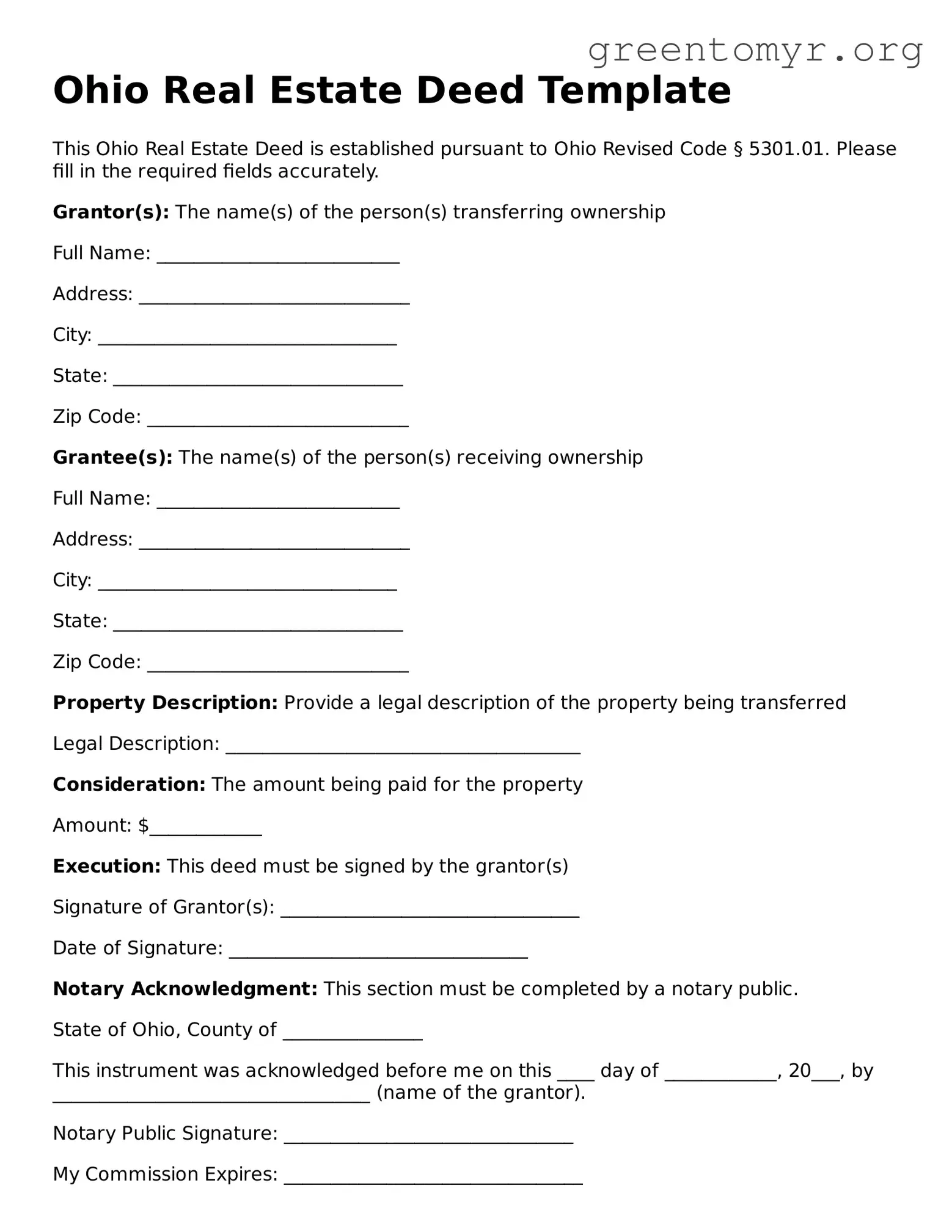Ohio Real Estate Deed Template
This Ohio Real Estate Deed is established pursuant to Ohio Revised Code § 5301.01. Please fill in the required fields accurately.
Grantor(s): The name(s) of the person(s) transferring ownership
Full Name: __________________________
Address: _____________________________
City: ________________________________
State: _______________________________
Zip Code: ____________________________
Grantee(s): The name(s) of the person(s) receiving ownership
Full Name: __________________________
Address: _____________________________
City: ________________________________
State: _______________________________
Zip Code: ____________________________
Property Description: Provide a legal description of the property being transferred
Legal Description: ______________________________________
Consideration: The amount being paid for the property
Amount: $____________
Execution: This deed must be signed by the grantor(s)
Signature of Grantor(s): ________________________________
Date of Signature: ________________________________
Notary Acknowledgment: This section must be completed by a notary public.
State of Ohio, County of _______________
This instrument was acknowledged before me on this ____ day of ____________, 20___, by __________________________________ (name of the grantor).
Notary Public Signature: _______________________________
My Commission Expires: ________________________________
Ensure to check local regulations regarding recording this deed. Prompt submission to the county recorder’s office is vital.
